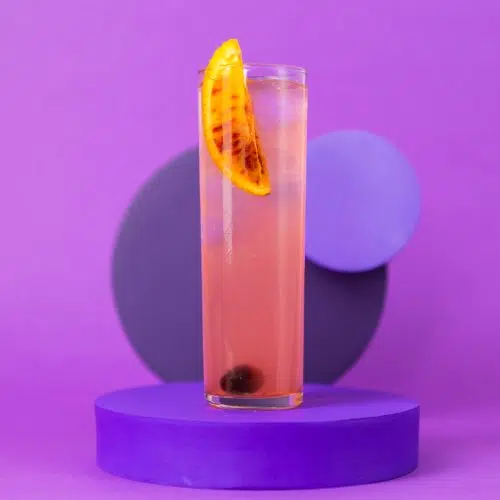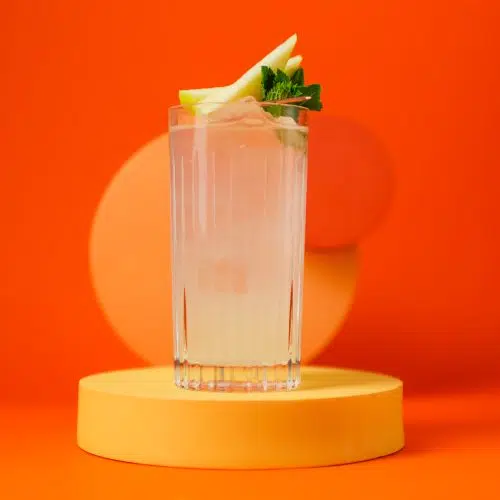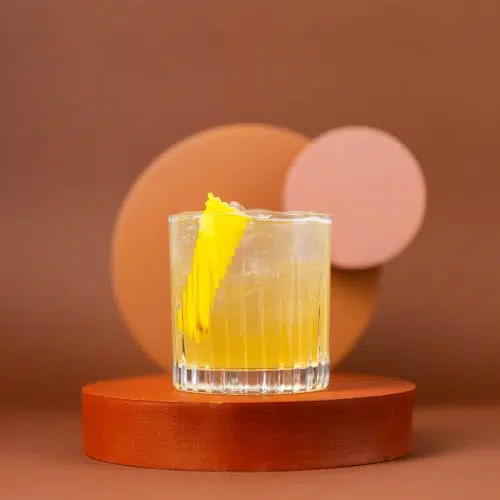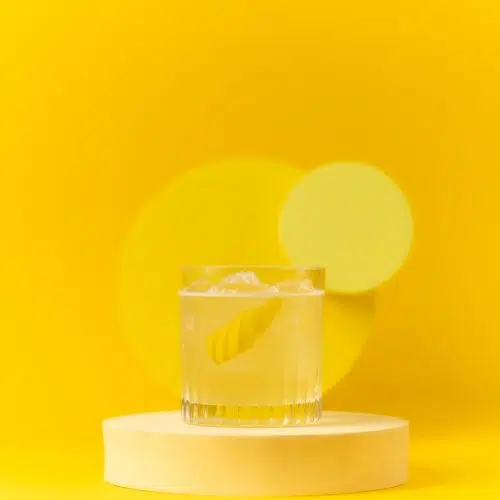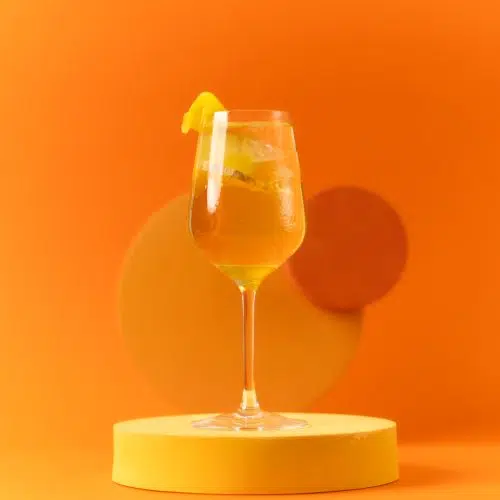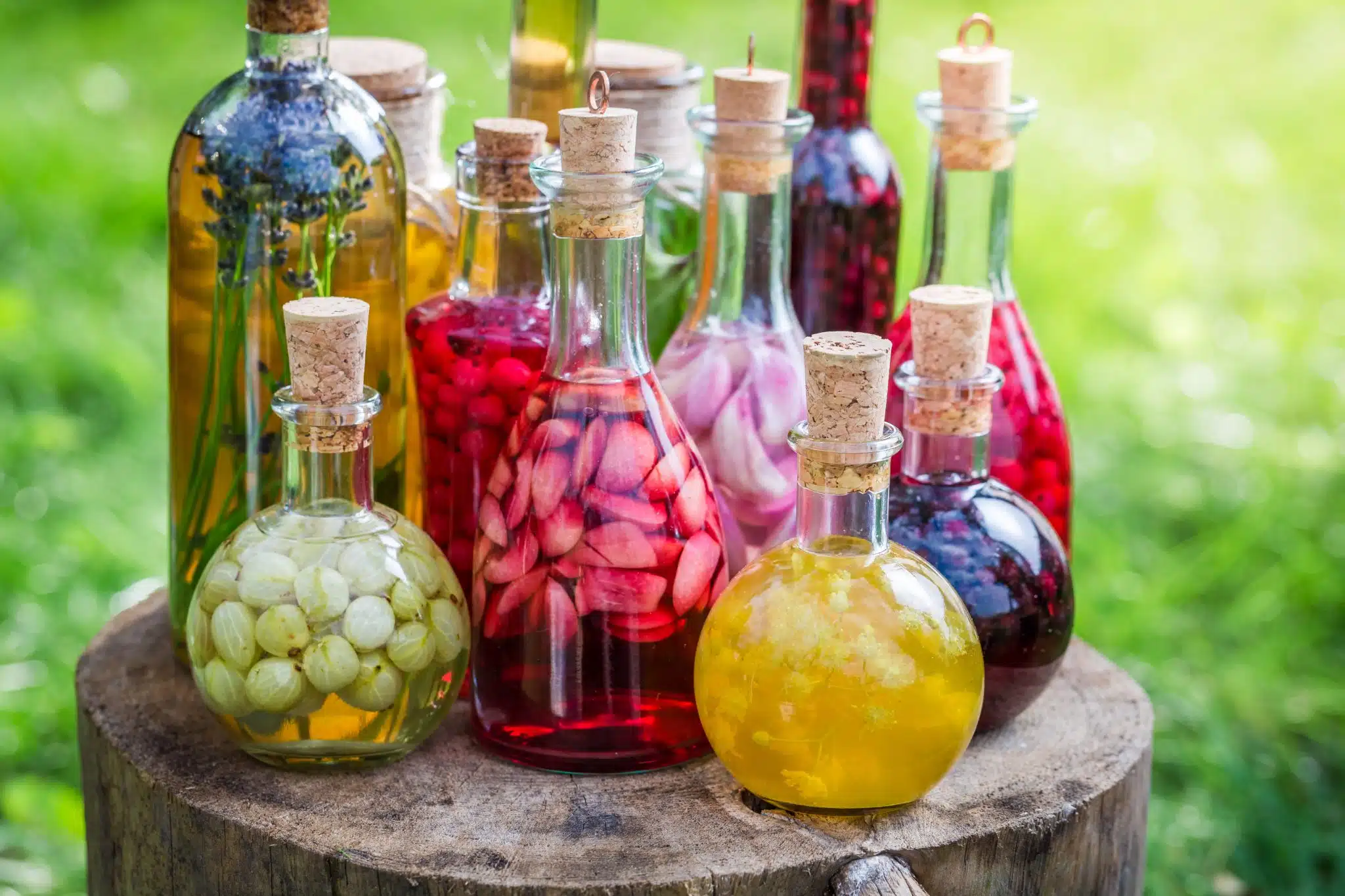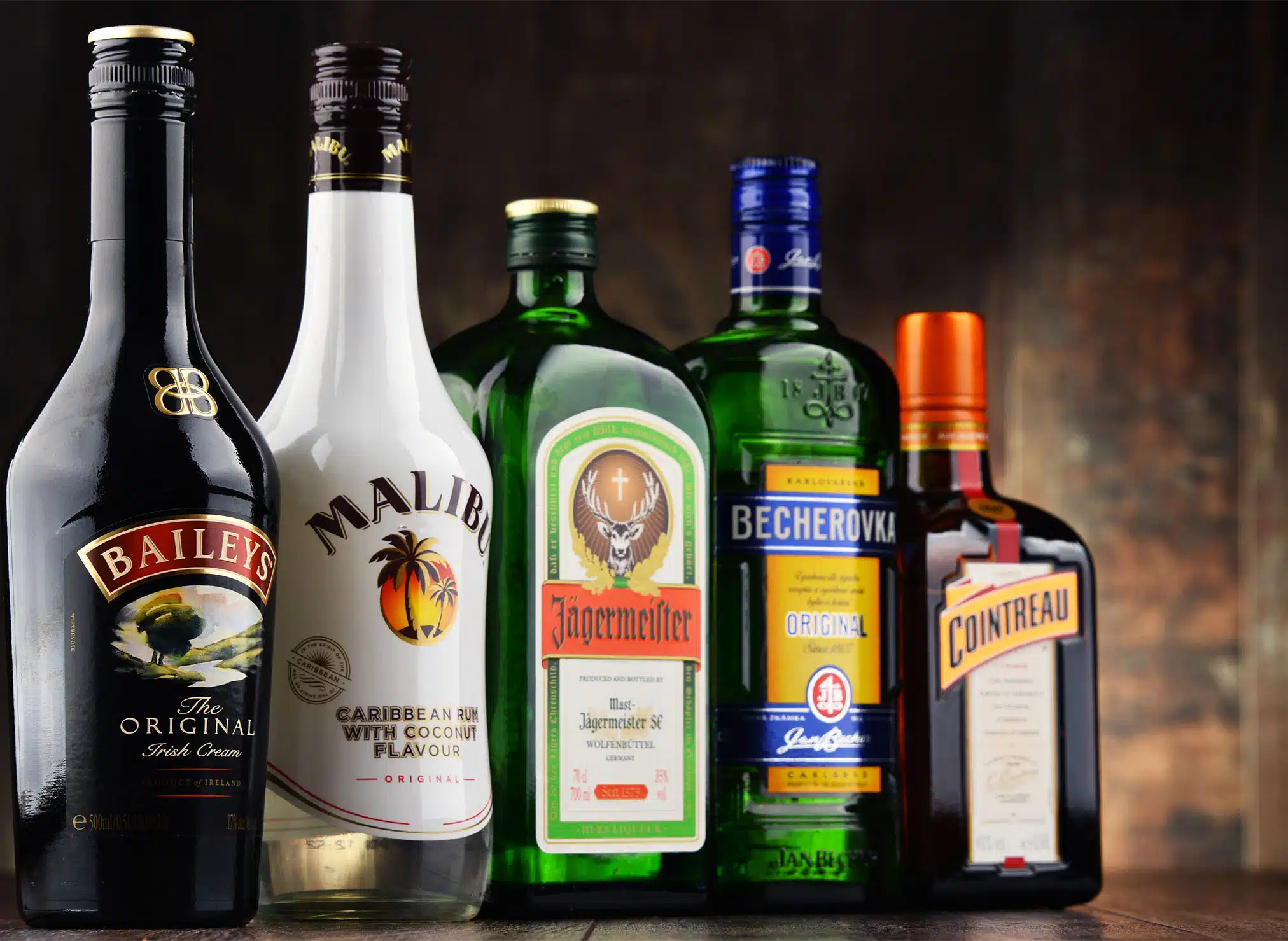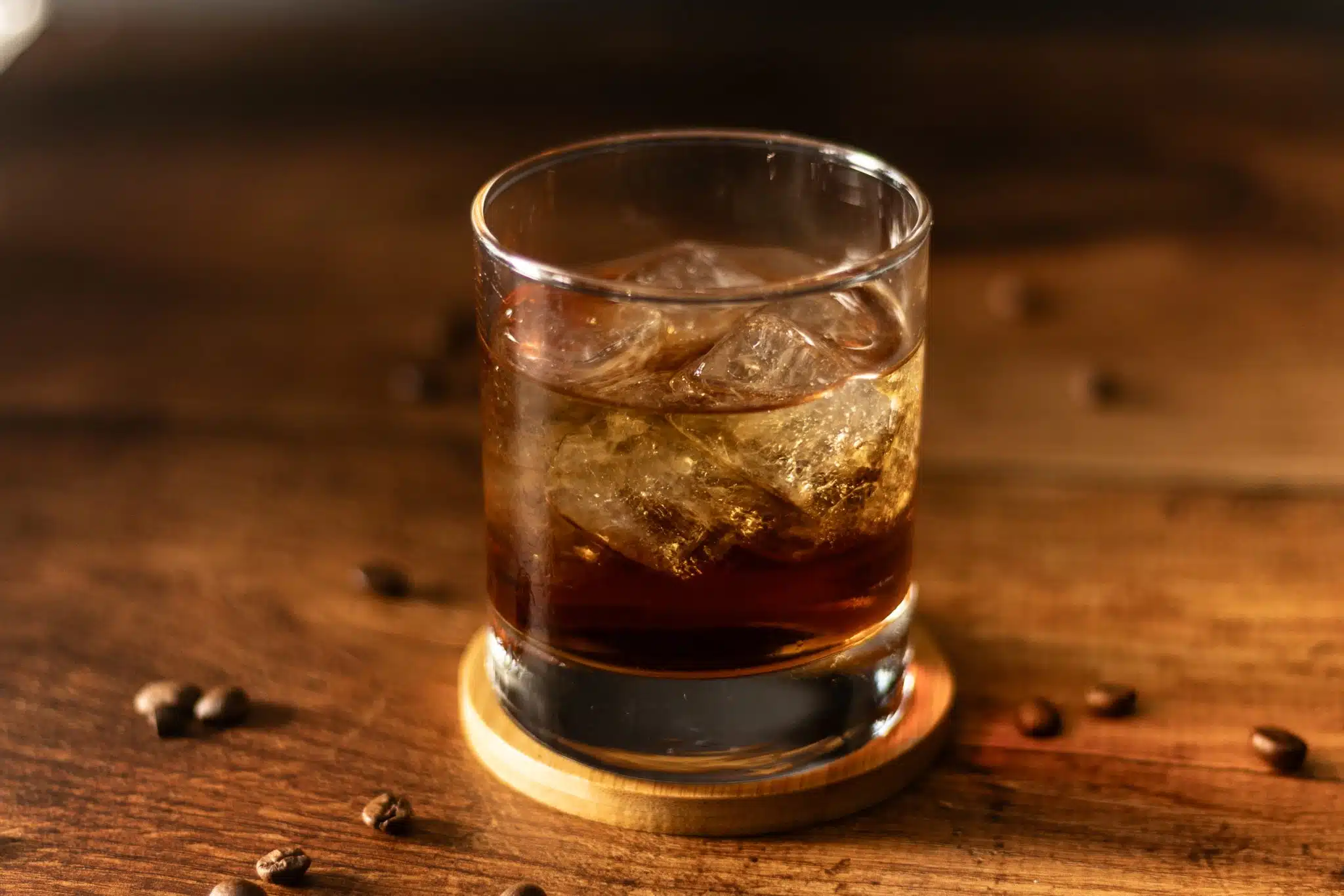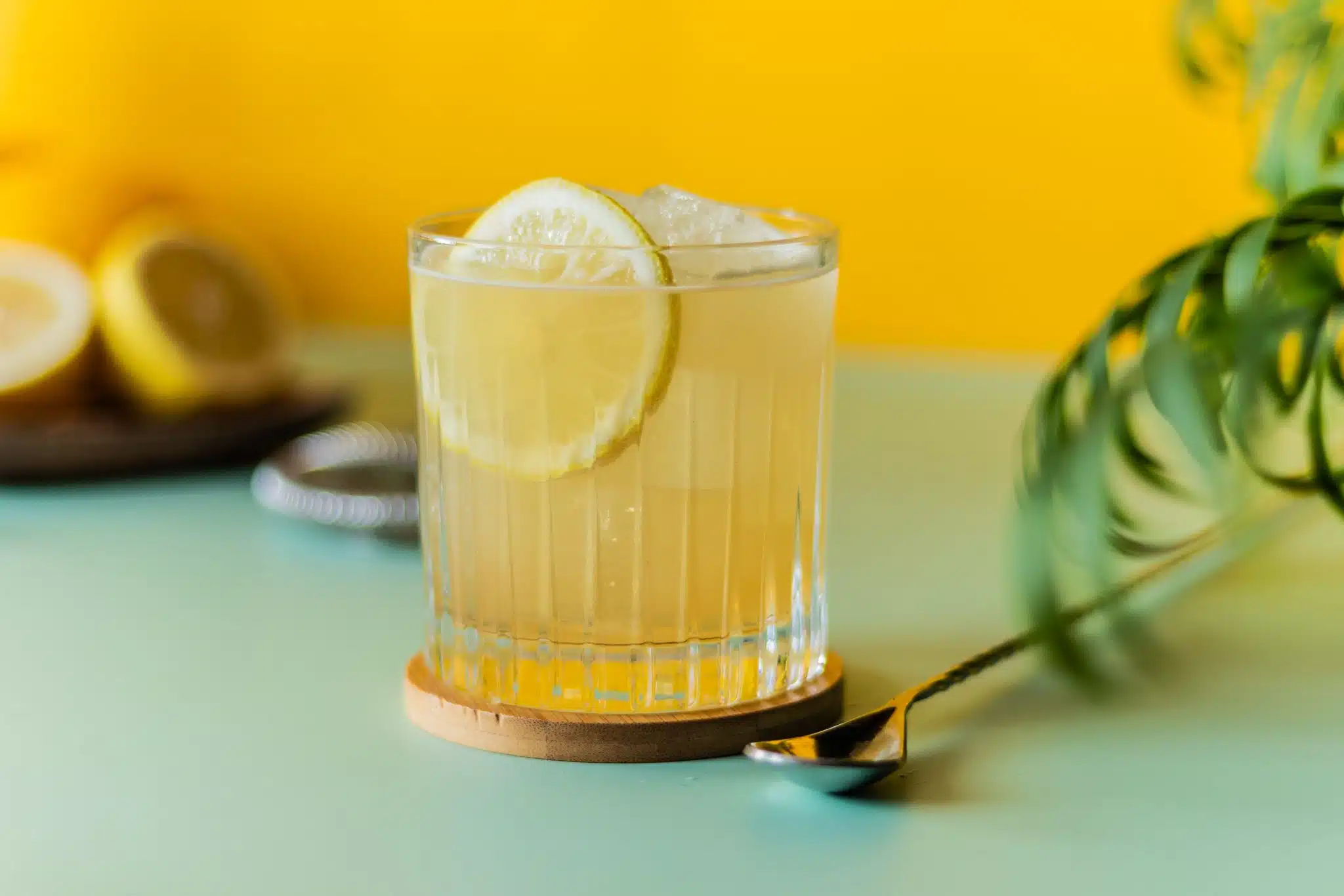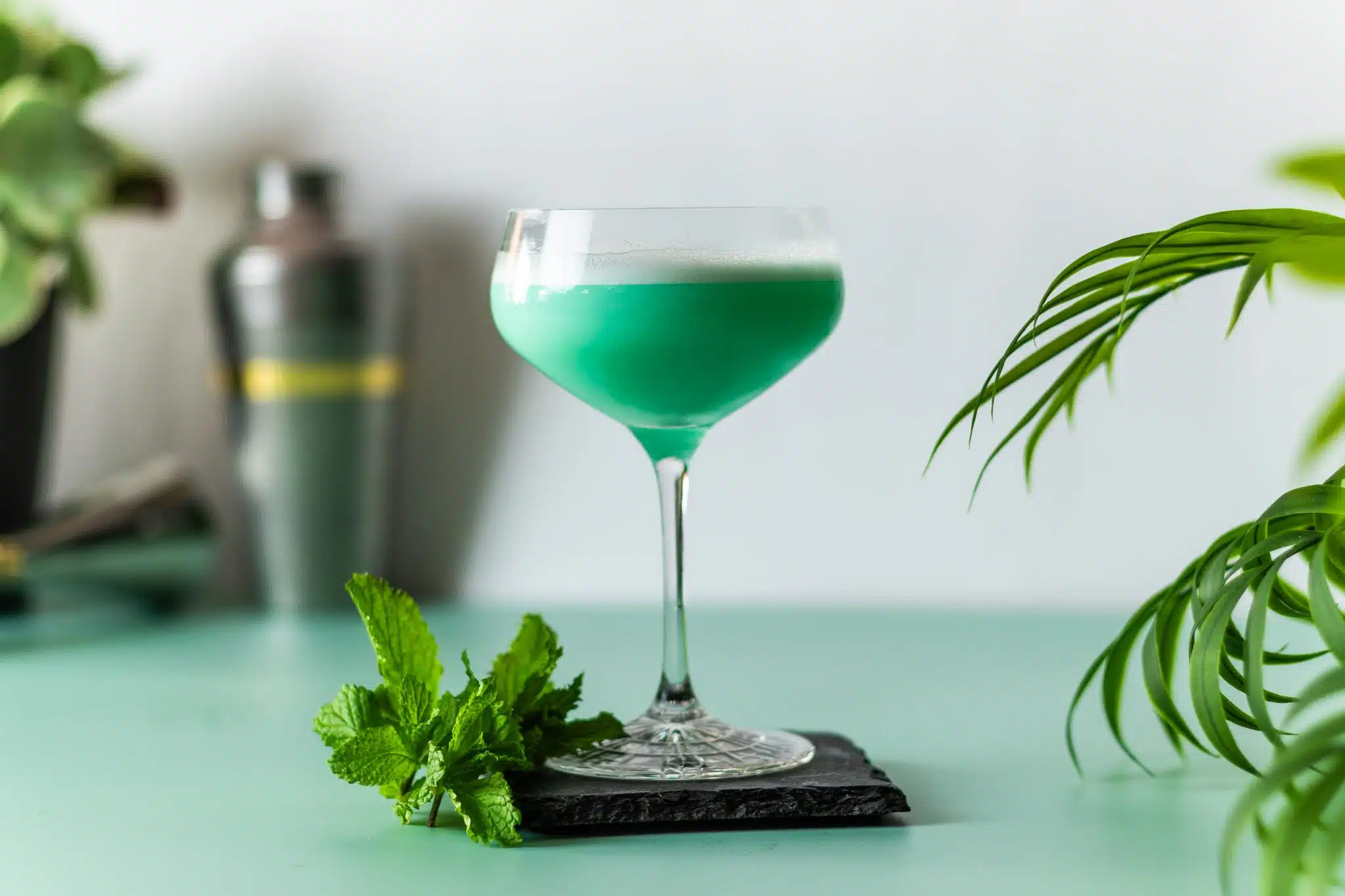Home / Liqueur
Liqueur
- Updated February 9, 2024

Liqueur Guide – What to Know Before You Shop Liqueur / Cordials Online
Imagine a lively party, lots of laughter, and everyone’s holding colorful drinks! Many of these drinks are made with liqueurs, sweet liquids that make any drink special. Liqueurs are classic, making creating tasty drinks that are a hit at any party easy. That’s why bartenders love them! They go great with many mixers, so you can make many different cocktails. Picking the right brands from the shops and mixing them just right can turn a plain drink into a party favorite!
What is Liqueur or Cordial?
A Liqueur or cordial is a distilled spirit flavored and sweetened after the distillation process. The base of is often a distilled spirit such as vodka, rum, or brandy, to which flavors and sweeteners are added.
How to say it? Pronounce Liqueur as “luh·kur”
Liqueur vs. liquor; what’s the difference?
In simple terms, all liqueurs are liquors, but not all liquors are liqueurs. Liquor is the broad category of alcoholic spirits, and liqueur is a sweetened, flavored subset of liquor.
Liquor refers to distilled spirits and includes beverages like vodka, rum, gin, tequila, and whiskey. They have a high alcohol content, between 35% and 60% ABV (Alcohol By Volume), and have a strong and sometimes harsh taste. On the other hand, liqueur is a type of sweetened liquor. The sugar content is significant, constituting at least 2.5% of the total volume. They have a lower alcohol content than liquors, usually between 15% and 30% ABV, and are known for their sweet and flavorful profiles.
Why we like Liqueur
It’s easy: we love that cozy sweetness, right? We’ve all had those days where we all want a quick break with a bottle of something that gets us. Liqueurs do that – they give us a sweet, short break, a quick getaway from our everyday tasks.
And yes, the liqueur cocktails! We all have a soft spot for those classic mixes. The way an orange liqueur changes a Margarita or how a coffee liqueur makes an espresso martini something special, we simply can’t resist!
Different Liqueur Types
This spirit comes in different flavors and characteristics. Here are several well-known types:
Fruit Liqueurs
These infuse the essence of oranges, raspberries, and lemons into alcohol, creating a sweet and flavorful drink. They are versatile and used in cocktails or sipped neat, often serving as a flavorful complement to various dishes.
Cream Liqueurs
These blend dairy cream with distilled spirits, offering a rich and smooth texture. They are delicious on the rocks, in coffee, or in desserts, providing a sweet and creamy flavor that is popular among many.
Herbal Liqueurs
These combine various herbs, spices, and other botanicals, creating complex and unique flavors. They can be savory, sweet, bitter, or spiced, and they are ideal for sipping or mixing in cocktails, often adding depth and complexity.
Nut-Flavored Liqueurs
Nut-flavored liqueurs capture the essence of nuts like almonds and hazelnuts. They can impart a sweet and nutty flavor to cocktails or desserts and are equally enjoyable when consumed neat or on the rocks.
Coffee Liqueurs
These blend coffee with alcohol, giving a sweet and robust beverage. They are a popular choice for adding a coffee flavor to cocktails and desserts or enjoyed over ice for a quick pick-me-up.
Anise-Flavored Liqueurs
Anise-flavored liqueurs have a distinctive licorice-like taste and often feature prominently in Mediterranean cuisine. They are suitable for drinking neat, diluted with water, or as a component in various cocktails, adding a unique and bold flavor profile.
Chocolate Liqueurs
These combine cocoa with alcohol, delivering a rich and sweet beverage. They are a delightful addition to desserts and cocktails or served neat as an after-dinner treat for those who love a touch of chocolate.
Honey Liqueurs
These mix honey with alcohol to create a sweet and smooth drink. They are versatile and can be enjoyed neat, on the rocks, or mixed in cocktails or culinary creations, bringing a natural sweetness and warmth.
Floral Liqueurs
These infuse the flavors of flowers like elderflower and violet into alcohol. They are fragrant and delicate, suitable for mixing in cocktails or sipping neat, often adding a floral note to beverages.
Spice Liqueurs
These incorporate various spices, delivering a punch of flavor to the palate. They can be hot, sweet, or aromatic and are excellent for mixing in cocktails, adding an extra layer of warmth and complexity.
Miscellaneous Liqueurs
These don’t fit neatly into any category and feature a mix of flavors, including vanilla, anise, and fruit. They can be versatile and used in various culinary applications, from cocktails to cooking.
What does Liqueur taste like?
Liqueur tastes sweet and often fruity, creamy, or herbal, depending on its ingredients. The sweetness comes from added sugars, honey, or other sweeteners.
The specific flavor profile depends largely on the flavoring agents used during production. For example, a fruit-based liqueur may have a sweet and tart flavor profile coming from the fruits it’s made from. Herbal liqueurs, however, may offer a complex mix of sweet, bitter, and aromatic flavors. Cream liqueurs usually have a rich and creamy texture with a sweet taste, and nut-flavored liqueurs can be sweet with a pronounced nutty flavor.
How much alcohol is in Liqueurs?
Liqueurs have an Alcohol by Volume (ABV) ranging from 15% to 55%, translating to 30 to 110 proof.
The alcohol content in liqueurs is generally lower compared to other spirits like vodka, rum, and whiskey, which usually have an ABV starting from around 40% (80 proof). Wine and beer have significantly lower ABV, with wine usually ranging between 12% to 15% ABV, and beer having an ABV between 4% to 8%.
Are there any Liqueurs substitutes?
Yes. For non-alcoholic replacements, you can use fruit juices, syrups, or extracts, and for coffee liqueurs, strong coffee or espresso with sugar works. A mixture of simple syrup and similarly flavored herbs or spices can be a good substitute for herbal liqueurs. If you’re okay with alcohol, another similarly flavored liqueur or an unflavored spirit like vodka mixed with suitable flavorings can be used.
Top Best Liqueur Brands
Baileys Irish Cream
Baileys Irish Cream is one of the most renowned cream liqueurs globally, blending rich Irish cream with fine whiskey. Its smooth texture and sweet, decadent flavor make it a popular choice for cocktails, coffee, and desserts.
Grand Marnier
Grand Marnier is a premium orange liqueur that combines fine cognac with distilled bitter orange essence. It is esteemed for its versatility in cocktails and culinary creations and its refined flavor when sipped neat.
Cointreau
Cointreau is a highly respected orange liqueur known for its crisp and clear character, with a balanced sweetness and zesty orange flavor. It’s a key ingredient in many classic cocktails, adding a fresh and vibrant kick.
Kahlúa
Kahlúa is a renowned coffee liqueur valued for its rich and robust coffee flavor and sweet and syrupy undertones. It is a flavorful addition to cocktails and desserts and is enjoyable over ice.
Amaretto DiSaronno
Amaretto DiSaronno is recognized as a top almond-flavored liqueur, boasting a sweet and nutty taste. It is ideal for mixing cocktails, adding warmth and sweetness, or savoring on the rocks.
Chambord
Chambord is a prestigious raspberry liqueur, with its distinct and luxurious flavor derived from red and black raspberries, Madagascar vanilla, Moroccan citrus peel, honey, and cognac. It elevates cocktails and desserts with its rich and fruity profile.
St-Germain
St-Germain, an artisanal French liqueur, features elderflowers’ delicate and fragrant flavor. It’s celebrated for its floral notes and versatile nature in mixing with various spirits to create refreshing and sophisticated cocktails.
Chartreuse
Chartreuse is legendary as a unique herbal liqueur made by Carthusian Monks since the 1740s. It offers a complex and distinct blend of 130 botanicals, making it a prized possession for cocktail enthusiasts and connoisseurs.
Frangelico
Frangelico is distinguished by its pronounced hazelnut flavor and hints of vanilla and dark chocolate. It adds a nutty richness to cocktails and desserts and is delightful when served neat or over ice.
Drambuie
Drambuie earns its reputation as a distinguished honey and herb-infused scotch whisky liqueur. It brings a sweet and spicy harmony to cocktails or a smooth finish when sipped straight, making it a favorite for those who appreciate nuanced flavors.
Where to buy Liqueur online?
If you’re looking to buy a liqueur online, you have options:
Drizly
Drizly is an easy-to-use online store where you can buy many types. They work with local stores to deliver quickly, usually in about an hour.
Total Wine & More
At Total Wine & More, you can find many liqueurs from many producers. The website has lots of information and reviews to help you choose the right one.
Liquor.com
Liquor.com is a trustworthy online store. They have a nice selection and lots of information about each bottle. They also have safe payment options and dependable delivery services.
Wine.com
Wine.com is not just for wine; it also sells liqueurs. The website is easy to use and has a lot of information and reviews about each product. They have different delivery options to meet different needs.
How much does Liqueur cost – Price Ranges
Liqueurs come in many price ranges and flavors, and what they are made of and their brand can change the price.
On the more affordable end of the spectrum, brands like DeKuyper cost around $10 to $20 a bottle. People often choose these for mixed drinks because they are more affordable.
Mid-range liqueurs include brands like Baileys Irish Cream and Kahlúa, usually costing between $20 and $35. These are known for good quality and taste; you can enjoy them in mixed drinks or alone.
On the premium side, brands like Grand Marnier and Chartreuse can go for over $35 or even up to $70. These are often enjoyed on their own because of their special, complex flavors.
How to drink Liqueur?
You can drink liqueurs neat, on the rocks, or mix in cocktails like Margarita and Amaretto Sour. Adding a dash to your coffee is another option!
Enjoying Neat or On the Rocks
If you drink it straight, you can taste all the flavors. Pour a little into a glass and sip it slowly. If it’s too strong, add ice to make it smoother and cooler.
Mixing in Cocktails
Mixing them with juices or sodas makes them taste balanced and flavorful. Adding liqueur can taste even better, whether making a fancy cocktail or a simple drink.
Adding to Coffee or Dessert
Adding a splash of liqueur to coffee or dessert can make them taste special. Brands like Baileys in coffee make it sweet and flavorful. You can also put it on ice cream or cakes to make them taste rich and delicious.
Layering in Shots
You can make cool-looking and tasty shots where the different liqueurs are stacked one on top of each other in distinct layers by carefully pouring them into a glass.
Chilling in the Refrigerator
Some taste better cold, especially ones with cream. Keeping them in the fridge makes them taste and feel even better. Brands like Baileys should be kept in the fridge to stay fresh and tasty.
Popular Liqueur Cocktails
Black Russian
The Black Russian cocktail combines the rich flavors of vodka and coffee liqueur, typically Kahlúa, creating a bold and satisfying drink.
White Russian
A White Russian is a creamy cocktail that combines vodka, coffee liqueur, and cream, offering a smooth and indulgent beverage.
Amaretto Sour
The Amaretto Sour blends the sweet and almond-flavored amaretto liqueur with lemon juice, resulting in a refreshingly tangy drink.
Grasshopper
The Grasshopper is a sweet and minty cocktail that mixes crème de menthe, crème de cacao, and cream, often enjoyed as a dessert beverage.
Margarita
A Margarita is a well-known cocktail that combines tequila with triple sec and lime juice, delivering a balance of sweet, sour, and strong flavors.
Cosmopolitan
The Cosmopolitan is a stylish and fruity cocktail that mixes vodka, triple sec, cranberry juice, and lime juice, known for its vibrant color and refreshing taste.
Kir Royale
The Kir Royale is a sophisticated cocktail that mixes crème de cassis, a blackcurrant liqueur, with champagne, offering a bubbly and fruity delight.
Irish Coffee
Irish Coffee is a warm and comforting drink that combines Irish whiskey, coffee, sugar, and a layer of cream. It occasionally incorporates Irish cream liqueur, providing a soothing and indulgent experience.
Also check: Our Top List of Cocktails.
What are the ingredients of Liqueur?
Every liqueur mixes the following ingredients in its way, creating lots of different flavors and types.
Base Spirit
The primary ingredient in any liqueur is the base spirit, usually a neutral alcohol like vodka or rum. This is the foundation on which the other ingredients build the flavor profile.
Flavoring Agents
Flavoring agents are crucial ingredients and can be derived from fruits, herbs, spices, flowers, nuts, and other botanicals. These impart unique flavors and aromas.
Sweeteners
Liqueurs are characterized by their sweetness, achieved by adding sweeteners to the mix. Sugar is the main sweetener used, but others like honey or corn syrup can also be used, depending on the desired flavor and texture.
Water
Water often dilutes the liqueur to the desired alcohol content and consistency.
Optional Ingredients
Depending on the specific recipe and desired end product, some may contain additional ingredients like colorings, preservatives, or other additives.
How is Liqueur made?
1. Ingredient Selection
It starts with selecting the base spirit, which can be vodka, rum, or another distilled spirit. The chosen spirit will host the flavors infused into it.
Additionally, ingredients like fruits, herbs, spices, or flowers are chosen to flavor the liqueur.
2. Infusion Process
The flavoring agents are then infused into the base spirit. This infusion process can involve simply steeping the flavoring ingredients in the spirit, like making tea or using more advanced techniques, like percolation, to extract flavors more intensively. The infusion duration varies, allowing the spirit to absorb the flavors fully.
3. Sweetening
Sweeteners are added once the infusion process is complete and the desired flavor profile is achieved. Sugar is used, but other sweeteners like honey or corn syrup can also be added depending on the recipe. The sweetness distinguishes liqueurs from other spirits and contributes to their distinctive taste.
4. Filtration and Bottling
The final step involves filtering out the solid particles from the liquid, leaving a clear, flavored spirit. The liqueur is then bottled and sometimes left to age for a period, allowing the flavors to meld and mature.
Food Pairing
When you pair food with liqueur, consider matching or mixing different flavors. Sweet liqueurs like chocolate are great with sweet desserts like chocolate cake because they strengthen the flavors. If a liqueur is herbal or bitter, it can make savory or fatty foods taste even better by balancing the flavors.
Creamy liqueurs are good with creamy desserts or coffee because they add a rich taste. Also, you can use liqueurs in cooking, like adding orange liqueur to a chicken marinade to give it a citrusy flavor. For example, coffee liqueur is good with sweet desserts like tiramisu, and fruity liqueurs are nice with fruit desserts or cakes.
Herbal liqueurs can make meats and even sorbets taste better, and nut-flavored liqueurs are good with nutty foods like almond cake.
Nutritional facts
The USDA provides the nutritional data for a single shot of liqueur, which weighs around 42 grams or 1.5 ounces. Here’s a table summarizing the nutritional facts:
| Nutrient | Amount | Unit |
|---|---|---|
| Calories | 103-165 | kcal |
| Protein | 0 | grams |
| Fat | 0 | grams |
| Carbohydrates | 11 | grams |
| Sugar | 11 | grams |
| Fiber | 0 | grams |
| Vitamins | 0 | — |
| Minerals | 0 | — |
| Alcohol Content | 15-55% | Percentage |
Note: These nutritional values can vary slightly depending on the specific brand and type of liqueur, especially as they often contain sugars and other flavoring agents, unlike many other distilled spirits.
History and Origin of Liqueur
Liqueurs started as medicine made by monks long ago, in the early Middle Ages. They would mix strong alcohol with plants, spices, and sweet things to make medicine taste better.
People in different parts of Europe started making their own kinds of liqueurs with special flavours, like Italy making amaretto and limoncello and France making fruit liqueurs.
As making alcohol improved and trading grew, more people could try different liqueurs. In the 1800s, liqueurs became popular in cocktails, and barkeepers started mixing them to make innovative and flavorful drink creations.
FAQs
- Are liqueurs always sweet? While they are typically sweet, some can be more bitter, depending on the ingredients used.
- Can I use liqueur in cooking? Yes, this spirit is often used in cooking and baking to enhance flavors.
- What are popular liqueur flavors? Popular flavors include fruit (like orange and berry), coffee, chocolate, mint, and almond.
- Is schnapps a type of liqueur? Schnapps is considered a type of liqueur, often fruit-flavored.
- How should I store liqueurs? Store the bottles in a cool, dark place, away from direct sunlight.
- Can liqueur go bad? While liqueurs have a long shelf life, they can deteriorate in quality over time, especially after opening.
- Can liqueurs be served at room temperature? Yes, but some, like the cream types, may benefit from refrigeration, and others may be enjoyed more when served chilled.
- Are liqueurs gluten-free? Many are gluten-free, but it depends on the specific ingredients used, so it’s best to check the label if gluten is a concern.
- How many calories are in liqueurs? Liqueurs can range from 103 to 165 calories per 1.5 ounces, depending on their sugar and alcohol content.
- Can I make my own liqueurs at home? Many home cooks make their own liqueurs by infusing spirits with flavorings and adding sweeteners.
- Are herbal liqueurs good for digestion? Some people believe herbal liqueurs can aid digestion and are often consumed as digestives after meals.
- Are there any low-sugar or sugar-free liqueurs? While most are sweet, some brands, such as Amaro Petrus Boonekamp and Fernet, offer lower-sugar or even sugar-free options.






